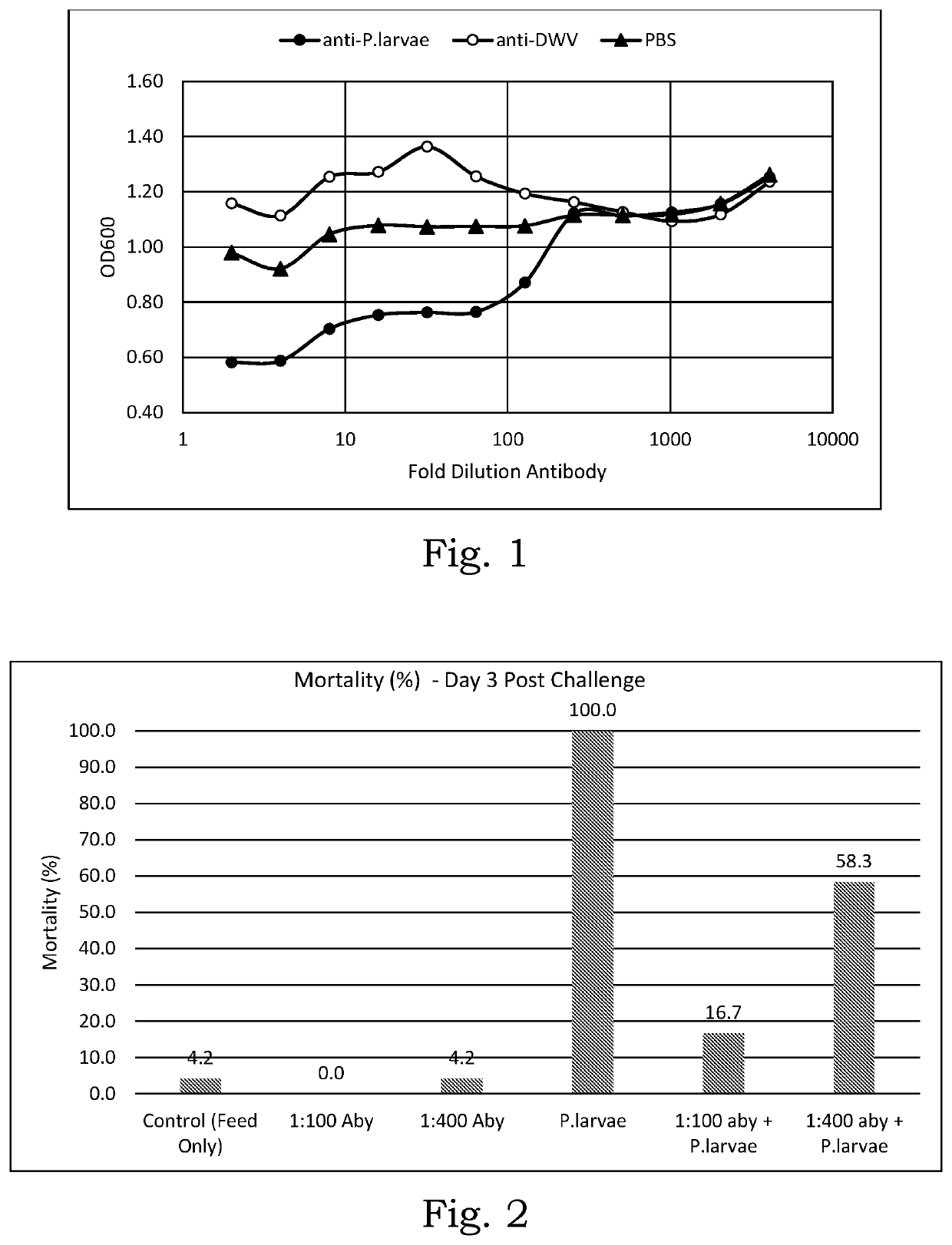Treatment and control of bacterial and fungal disease in honeybees
a technology honeybees, which is applied in the field of treatment and control of bacterial and fungal disease in honeybees, to achieve the effect of reducing mortality and reducing incidence of mortality
- Summary
- Abstract
- Description
- Claims
- Application Information
AI Technical Summary
Benefits of technology
Problems solved by technology
Method used
Image
Examples
examples
[0021]The following examples set forth methods in accordance with the invention. It is to be understood, however, that these examples are provided by way of illustration and nothing therein should be taken as a limitation upon the overall scope of the invention.
Bacterial Antibodies
[0022]Whole inactivated Paenibacillus larvae bacteria were combined with Freund's incomplete adjuvant at 50% final volume and used to inject laying hens biweekly four times. Antibodies were subsequently purified from the egg yolks using published protocols and used for the study.
[0023]Briefly, twelve white leghorn chickens, approximately 6-months of age, were immunized four times with the P. larvae vaccine. Each vaccine consisted of 9.0 log10 colony forming units of inactivated P. larvae and 50% incomplete Freund's adjuvant with the remaining volume comprised of phosphate buffered saline. The birds were administered with a 0.5 cc intramuscular injection in each breast. Immunizations were given at 14-day in...
PUM
| Property | Measurement | Unit |
|---|---|---|
| pH | aaaaa | aaaaa |
| Pressure | aaaaa | aaaaa |
| optical density | aaaaa | aaaaa |
Abstract
Description
Claims
Application Information
 Login to View More
Login to View More - R&D
- Intellectual Property
- Life Sciences
- Materials
- Tech Scout
- Unparalleled Data Quality
- Higher Quality Content
- 60% Fewer Hallucinations
Browse by: Latest US Patents, China's latest patents, Technical Efficacy Thesaurus, Application Domain, Technology Topic, Popular Technical Reports.
© 2025 PatSnap. All rights reserved.Legal|Privacy policy|Modern Slavery Act Transparency Statement|Sitemap|About US| Contact US: help@patsnap.com

